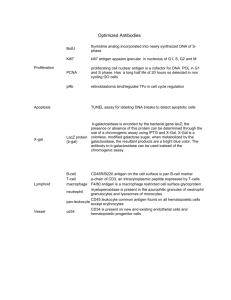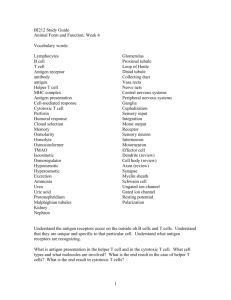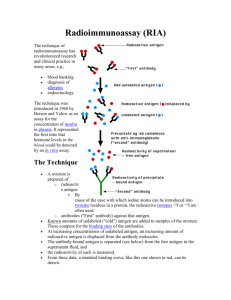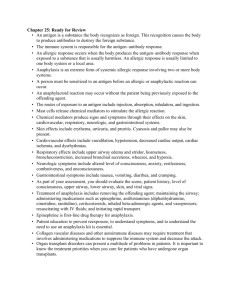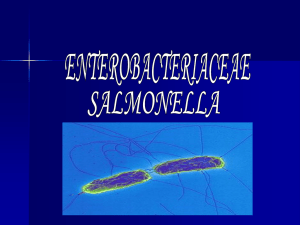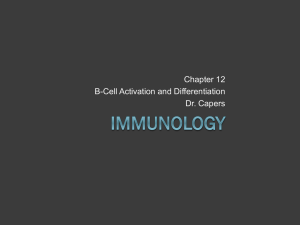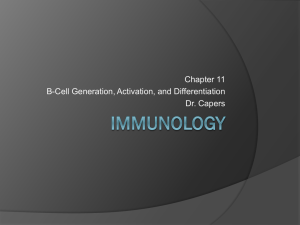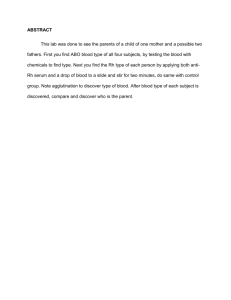Immune cells summary
advertisement
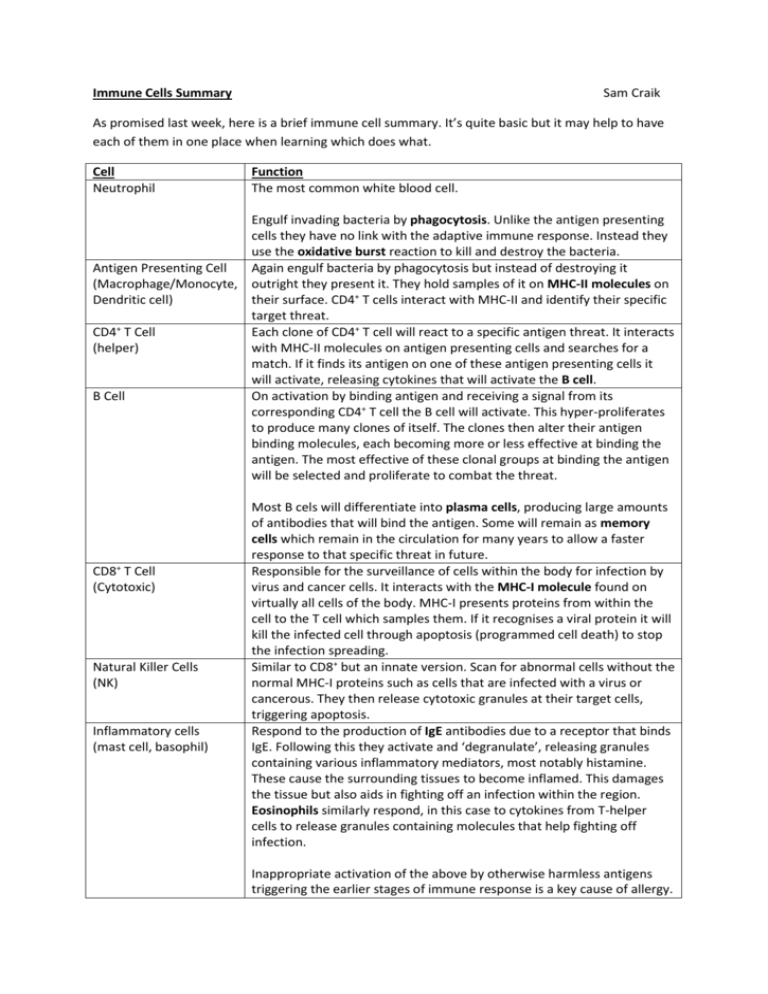
Immune Cells Summary Sam Craik As promised last week, here is a brief immune cell summary. It’s quite basic but it may help to have each of them in one place when learning which does what. Cell Neutrophil Function The most common white blood cell. Engulf invading bacteria by phagocytosis. Unlike the antigen presenting cells they have no link with the adaptive immune response. Instead they use the oxidative burst reaction to kill and destroy the bacteria. Antigen Presenting Cell Again engulf bacteria by phagocytosis but instead of destroying it (Macrophage/Monocyte, outright they present it. They hold samples of it on MHC-II molecules on Dendritic cell) their surface. CD4+ T cells interact with MHC-II and identify their specific target threat. + CD4 T Cell Each clone of CD4+ T cell will react to a specific antigen threat. It interacts (helper) with MHC-II molecules on antigen presenting cells and searches for a match. If it finds its antigen on one of these antigen presenting cells it will activate, releasing cytokines that will activate the B cell. B Cell On activation by binding antigen and receiving a signal from its corresponding CD4+ T cell the B cell will activate. This hyper-proliferates to produce many clones of itself. The clones then alter their antigen binding molecules, each becoming more or less effective at binding the antigen. The most effective of these clonal groups at binding the antigen will be selected and proliferate to combat the threat. CD8+ T Cell (Cytotoxic) Natural Killer Cells (NK) Inflammatory cells (mast cell, basophil) Most B cels will differentiate into plasma cells, producing large amounts of antibodies that will bind the antigen. Some will remain as memory cells which remain in the circulation for many years to allow a faster response to that specific threat in future. Responsible for the surveillance of cells within the body for infection by virus and cancer cells. It interacts with the MHC-I molecule found on virtually all cells of the body. MHC-I presents proteins from within the cell to the T cell which samples them. If it recognises a viral protein it will kill the infected cell through apoptosis (programmed cell death) to stop the infection spreading. Similar to CD8+ but an innate version. Scan for abnormal cells without the normal MHC-I proteins such as cells that are infected with a virus or cancerous. They then release cytotoxic granules at their target cells, triggering apoptosis. Respond to the production of IgE antibodies due to a receptor that binds IgE. Following this they activate and ‘degranulate’, releasing granules containing various inflammatory mediators, most notably histamine. These cause the surrounding tissues to become inflamed. This damages the tissue but also aids in fighting off an infection within the region. Eosinophils similarly respond, in this case to cytokines from T-helper cells to release granules containing molecules that help fighting off infection. Inappropriate activation of the above by otherwise harmless antigens triggering the earlier stages of immune response is a key cause of allergy. Remember: CD4+ (helper) T cells interact with MHC-II (2) molecules on antigen presenting proteins. CD8+ (cytotoxic) T cells interact with MHC-I (1) molecules found on most cells. 4x2=8x1

